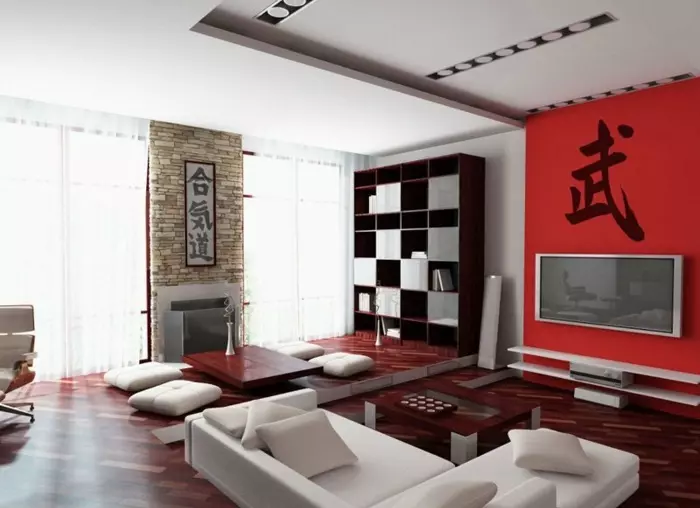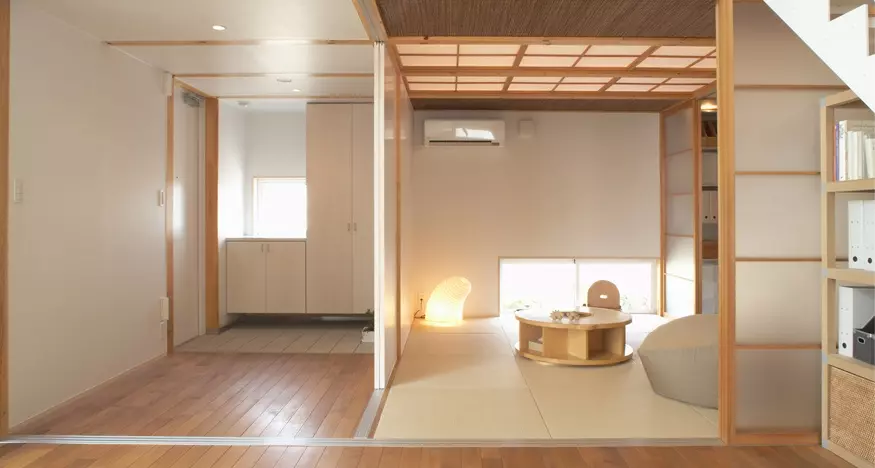There was a time when people believed that having extravagant furniture showcased their wealth. However, as time passed, and a deeper understanding of true elegance emerged, people began to appreciate the beauty of minimalism in their lifestyle.
Incorporating the sentiments of Zen philosophy into their living spaces, Scandinavian and Japanese interior designs have become synonymous with minimalistic living. Japanese culture, in particular, pays homage to ancient traditions, embracing minimalism and Zen principles while living in harmony with the natural world. Their design ideas often incorporate greenery, open spaces, and an abundance of natural light. Craftsmanship is also highly valued, with furniture made in specialized design studios using natural materials.
In a traditional Japanese home, a Japanese tea ceremony is held to invite Zen tranquility into the hearts of its occupants. Tatami mats are laid around a coffee table, where they follow the six essential steps of the ceremony. Initially limited to the regions surrounding Kyoto and Tokyo, these traditions have quickly gained popularity in the Western world. Although not fully embracing all aspects of Japanese culture, the West has eagerly adopted the concept of Zen philosophy.
So, how can modern interior design ideas successfully integrate with the art of Zen and minimalism?
Components of Japanese Interior Design and Zen Philosophy
Japanese interior design incorporates several key elements and principles inspired by Zen philosophy. Let's take a closer look:
-
Ample Natural Light: Japanese architects utilize large windows and Shoji, a traditional Japanese door or window made of wood and paper, to flood the house with natural light.
-
Bringing Nature Inside: Traditional Japanese plants, such as Bonsai trees, are often incorporated into interior spaces, connecting the home with the natural world.
-
Embracing Imperfections: A core principle of Zen philosophy is accepting the imperfections of the world. Japanese interior design follows the concept of wabi-sabi, which finds beauty in imperfections, allowing residents to embrace the true essence of their surroundings.
-
Tatami Mats: Hand-woven straw mats called Tatami mats line the floors of Japanese homes. These mats provide comfort and insulation during different seasons, keeping the floors warm during winter and cool during summer.
-
Ofuro Bathtubs: Japanese interior designers prioritize relaxation with the use of large bathtubs made of Hinoki, a natural material. These spacious bathtubs bring a sense of tranquility and harmony to the often limited space of Japanese bathrooms.
-
Personal Touches: The Japanese embrace DIY techniques, infusing personal touches into their furniture designs for a unique and authentic feel.
-
Genkan-style Entryways: A Genkan system is adopted at the entrance of Japanese homes. These dedicated porch-like areas are lined with doormats, creating a distinct transition from the outside world to the inner sanctuary.
-
Low-height Furniture: Japanese culture traditionally encourages sitting on cushions or Tatami mats on the floor to maintain good posture. As a result, Japanese interior design incorporates low-height furniture that complements this lifestyle.
-
Minimalism: Japanese homes are known for their clean and organized nature. Minimalist design principles ensure that clutter is kept at bay, promoting a sense of calm and simplicity.
Now, let's explore some practical tips for incorporating Japanese interior design into your home:
1. Use Open Spaces
 Image: Open Space Japanese Interior Design
Image: Open Space Japanese Interior Design
2. Consider Wallpapers With Japanese Nuances
 Image: Japanese Nuances Wall Design
Image: Japanese Nuances Wall Design
3. Introduce Natural Elements In Your Design Style
4. Use Minimalist Design Patterns With White Color Tones
5. Use Sliding Doors, Screens, and Dividers
6. Incorporate The Use Of Wood And Straws
7. Design Genkan-style Entryways
 Image: Genkan Entry Japanese House
Image: Genkan Entry Japanese House
8. Don’t Forget The Huge Bathtubs
9. Use Low-bearing Furniture Design
 Image: Low Bearing Furniture Design
Image: Low Bearing Furniture Design
10. Keep It Clean And Simple
 Image: Clean and Simple Japanese Design
Image: Clean and Simple Japanese Design
Incorporating Japanese interior design into your home can bring a sense of tranquility, simplicity, and elegance. By embracing minimalism and Zen philosophy, you can create a space that promotes relaxation and harmony, allowing you to find solace in your own sanctuary.
Remember, it's not just about the furniture and design choices but also about embodying the principles of Zen philosophy in your everyday life. Let your home be a reflection of your inner peace and embrace the duality of imperfection and beauty, just as the Japanese have mastered for centuries.

















